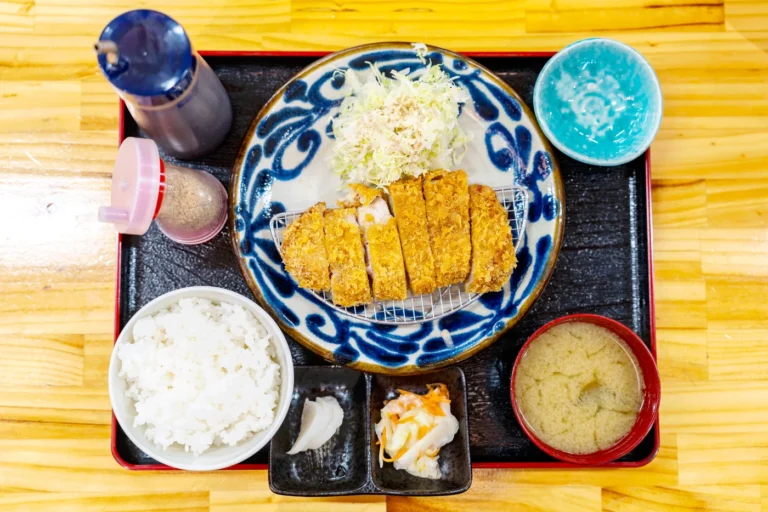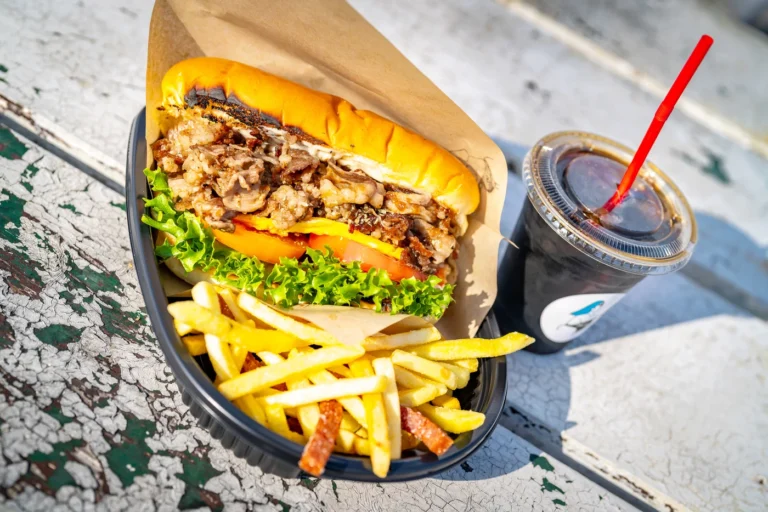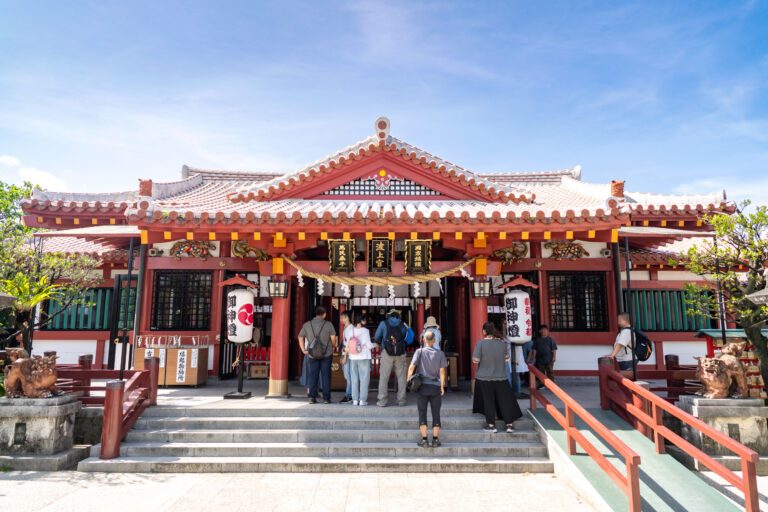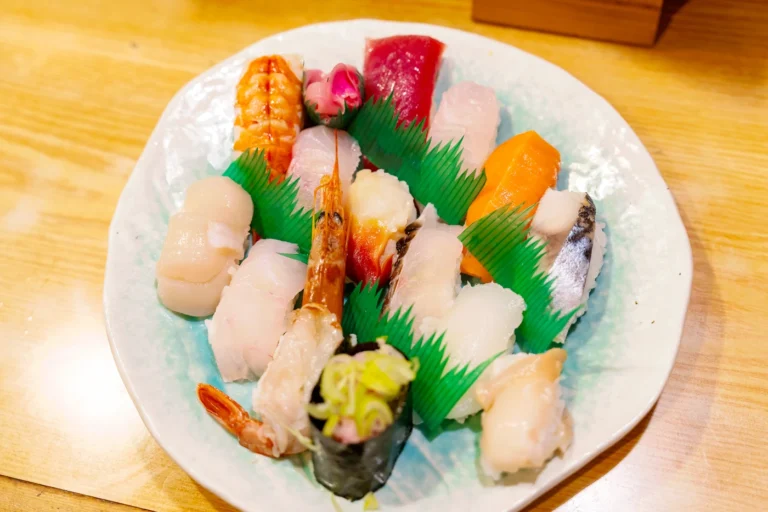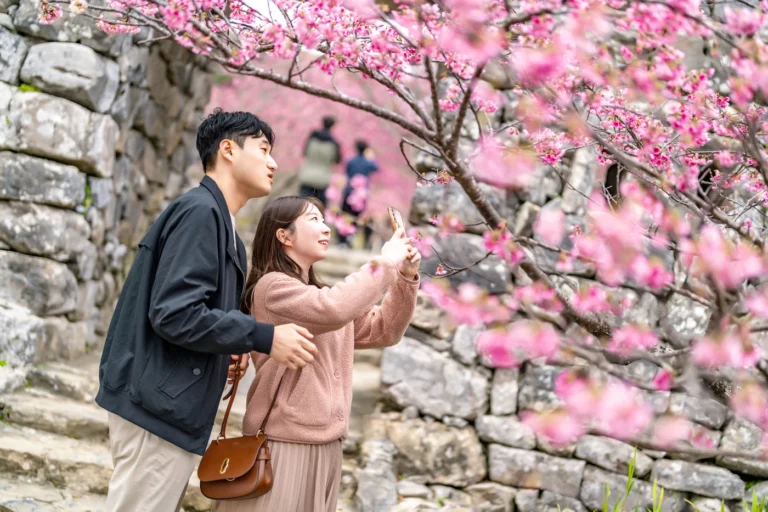Shuri Castle under restoration
👋 Haisai! It’s CULT here.
Today, I’m sharing my experience of visiting Shuri Castle, which is currently undergoing restoration. While renting a car is the most convenient way to explore Okinawa, I opted for an electric bicycle. I live in Okinawa and absolutely love cycling. Although I don’t have any specific electric bicycle rental companies to recommend, I’m sure there are some if you search around. I haven’t tried an electric bicycle rental service myself, but you’ll need a fairly good one to get to Shuri Castle.
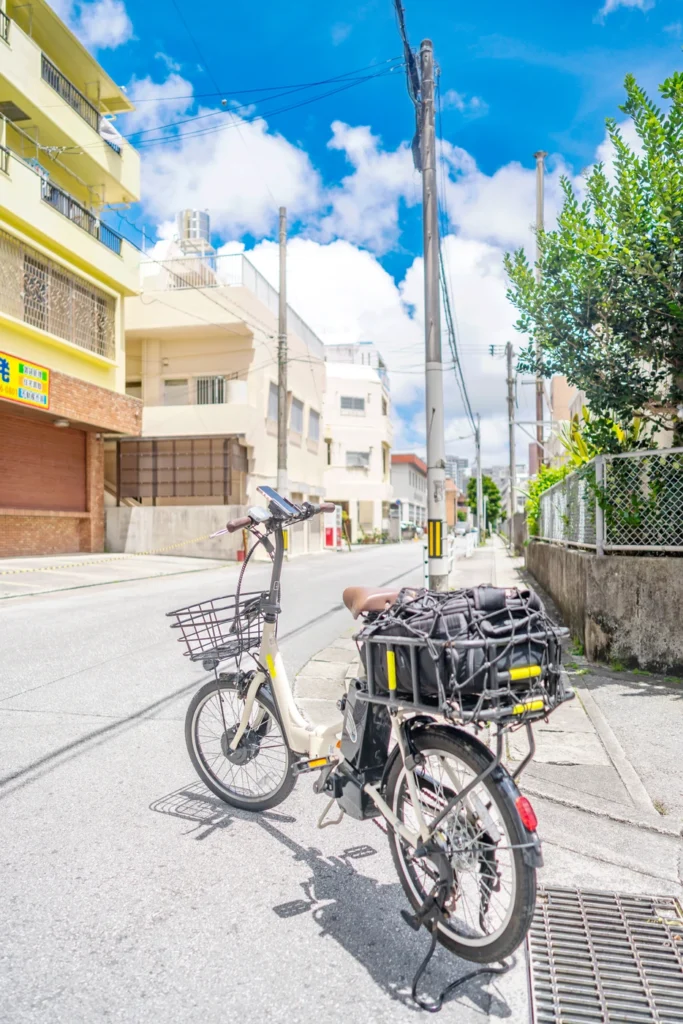
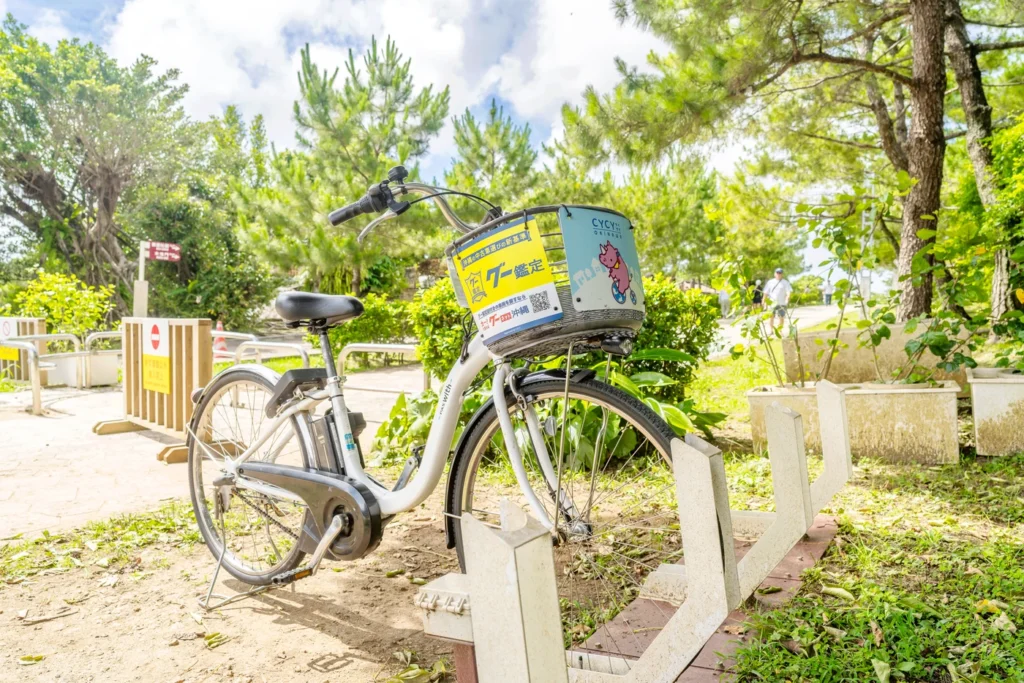
The electric bike on the left is mine, and the one on the right is an electric bike from the brand CYCY. My bike has no trouble climbing the steep hills of Shuri Castle, but the shared bike is too weak to make it up the hills of Shuri Castle. That’s why I suggested using a service that rents out good electric bikes. Riding up to Shuri Castle and then cycling down is a refreshing and fun experience. I highly recommend this method 👍
📌 How to Get to Shuri Castle
You can reach Shurijo Castle in various ways. As it’s a prominent tourist attraction in Okinawa, a lot of attention has been given to accessibility. However, since it’s located on the highest hill in the area, I definitely don’t recommend walking or using a regular bicycle to get there. You can also use the monorail to get nearby.
It’s open all year round ⏰ Opening hours are from 8 AM to 7:30 PM daily. [Google Map]


As it’s a popular tourist destination, there are various ways to get there. If you’re using a rental car, you can park in the car park. If the parking space at Shuri Castle itself (parking fee 400 yen per hour) is full, you can also use nearby coin-operated car parks. Parking attendants will guide you on where to go if the car park is full. Additionally, buses run once an hour, but they are not very punctual, so they are not highly recommended. It’s actually quicker to take the monorail and walk a bit.
ℹ️ Things You Can Do at the Info Centre

If you’ve parked or, like me, arrived by bicycle, the first stop should be the info centre. It’s because it’s hot. It’s summer now, so let’s cool off for a moment. The info centre is nice and cool.
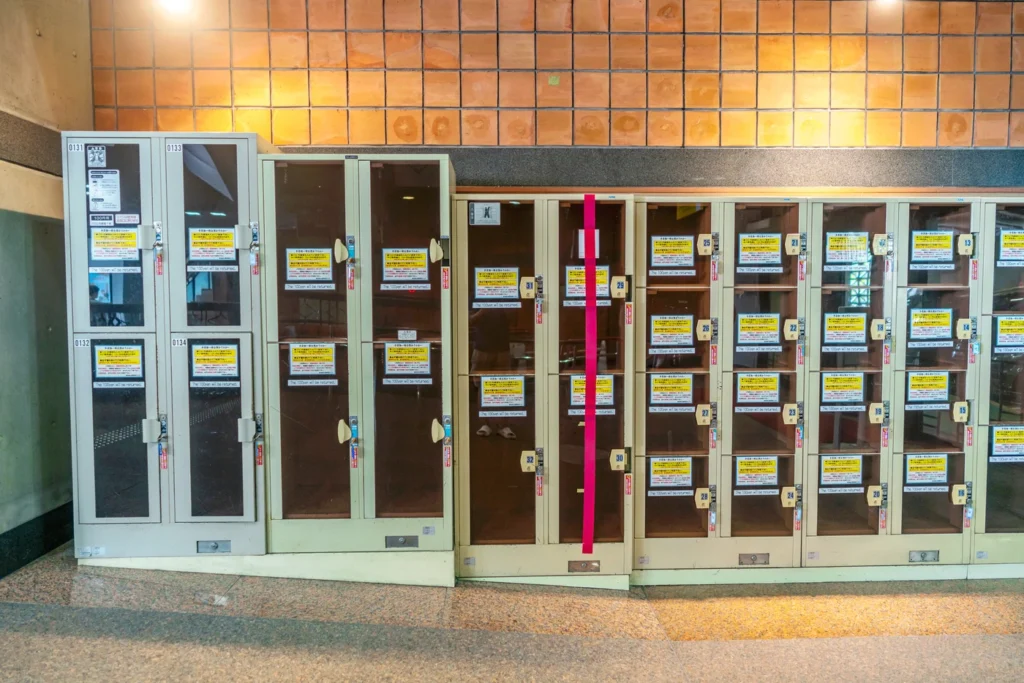
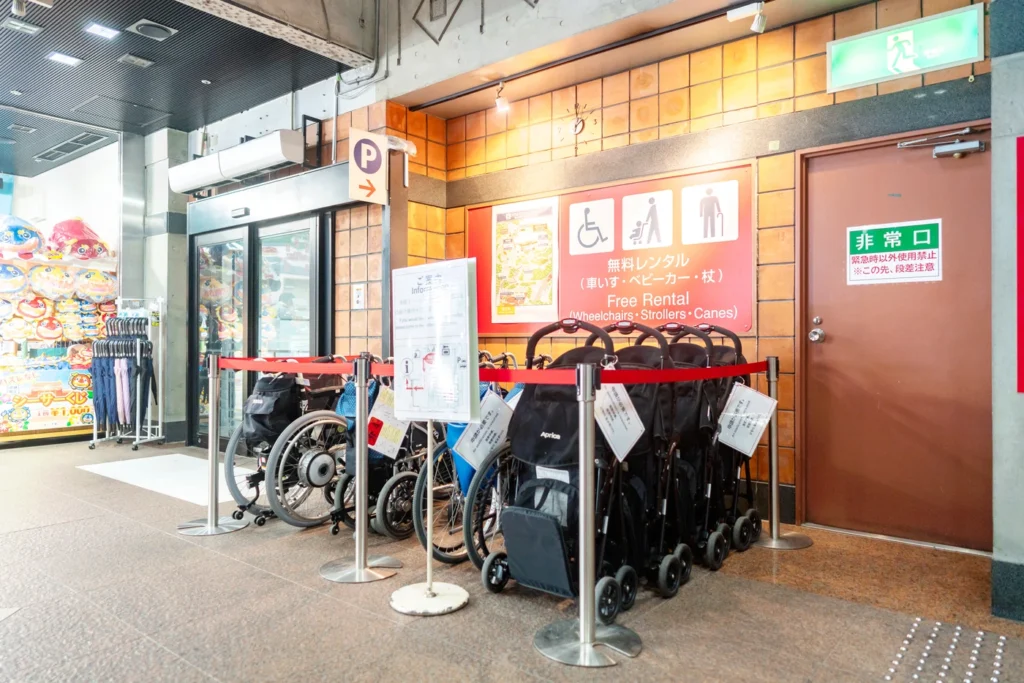
Inside the info centre, there are coin lockers (paid) and strollers and wheelchairs available for free rental. Shuri Castle is well-equipped with ramps, making it accessible for those with strollers or wheelchairs, so visitors with babies or mobility issues can easily enjoy the visit. However, please note that the observatory is only accessible by stairs, so reaching it might not be possible.
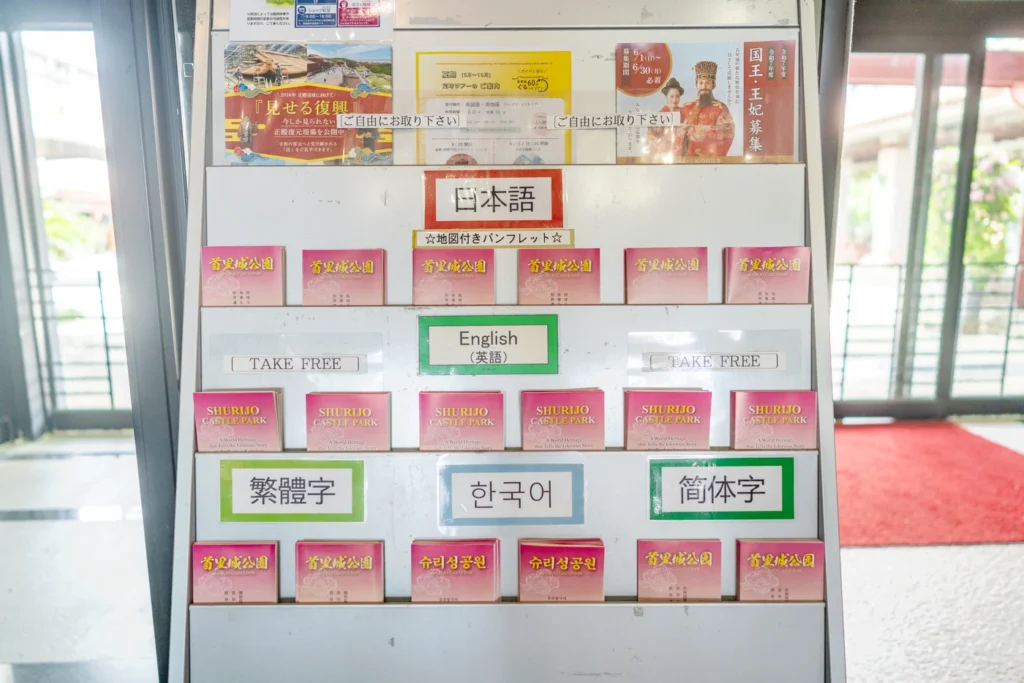
And brochures in various languages are available.
They provide a brief history of Shurijo Castle and guidance on where and how to explore it. Brochures are available in Korean, as well as English, Japanese, Taiwanese, and Chinese, so be sure to take one. Personally, I have a hobby of collecting these, so I picked up both the English and Korean versions.
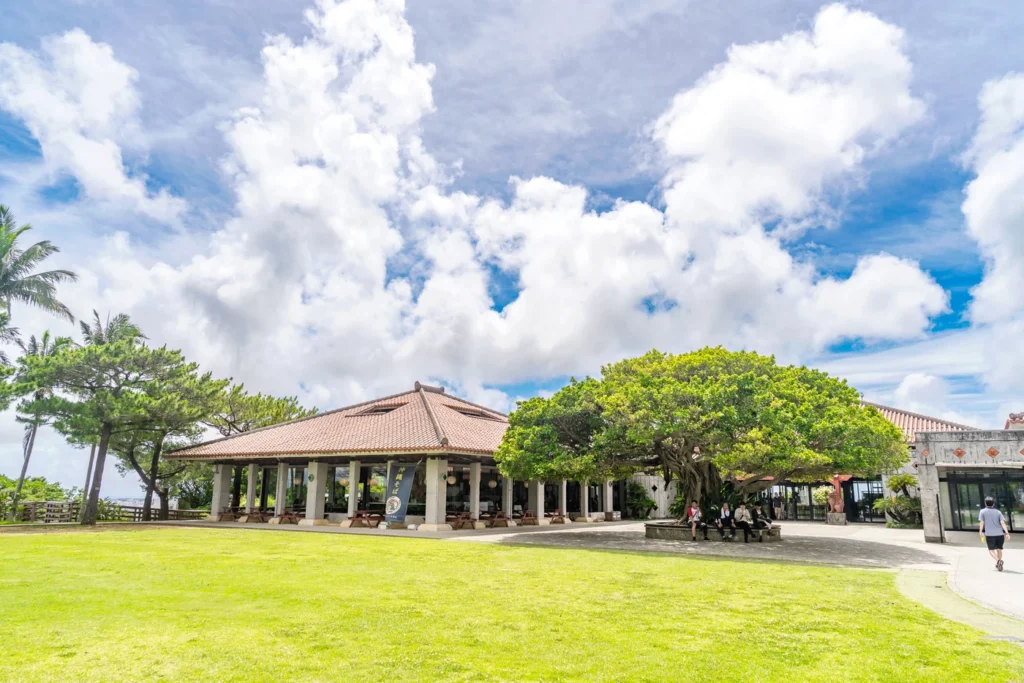
The official name of this place is “Shurijo Park”.
There is an open space with a lawn, and once you pass through here, you can head to the main Shurijo Castle ruins. But until a few months ago, there were many drink vending machines here, and most of them have disappeared. It’s quite disappointing. My plan was to start the tour with a refreshing drink under the shade of the tree on the right.
🏯 Shuri Castle Tour
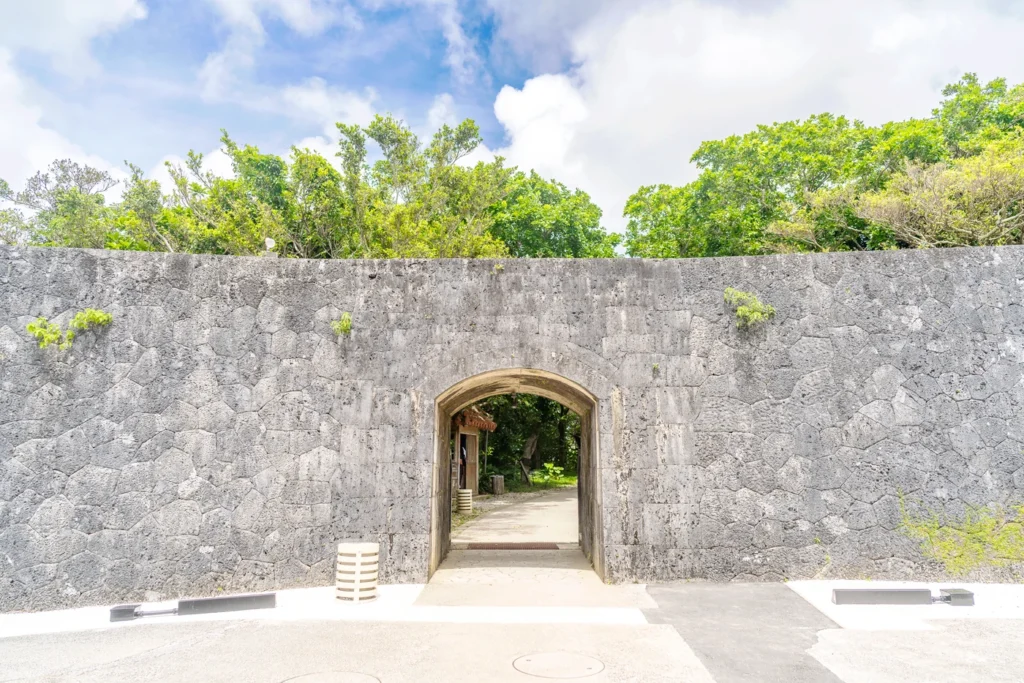
This is my third visit to Shurijo Castle, so I don’t have any questions. However, I’ll give you a brief introduction for your benefit.
🏯 Shurijo Castle was once the residence of the king of the Ryukyu Kingdom. It is the most iconic landmark symbolising Okinawa. However, on 31st October 2019, around 2:40 am, a fire broke out for unknown reasons, and it was completely destroyed. Currently, restoration work is underway.
Restoration efforts began in 2020, with the aim to complete by the end of next year, 2026. From what I can see, the exterior restoration seems almost complete.
To explain its history, it was built in the late 14th century and was nominally downgraded to a royal castle after the Satsuma Domain invasion in 1609. Unfortunately, due to the Meiji Restoration, the powerful Satsuma Domain led to Shurijo Castle being abolished in 1879.
It was completely destroyed during the Pacific War, restored in 1992, and then lost again in 2019..
In a nutshell: It is a castle with an incredibly tumultuous fate.

Shurijo Castle isn’t particularly large, so the paths aren’t difficult to navigate. Just follow the signs, and you’ll easily be able to explore it to the end. One of the highlights of visiting Shurijo Castle is the numerous spots where you can take photos with the panoramic view of Naha in the background, so make sure to capture some refreshing scenic shots as souvenirs.

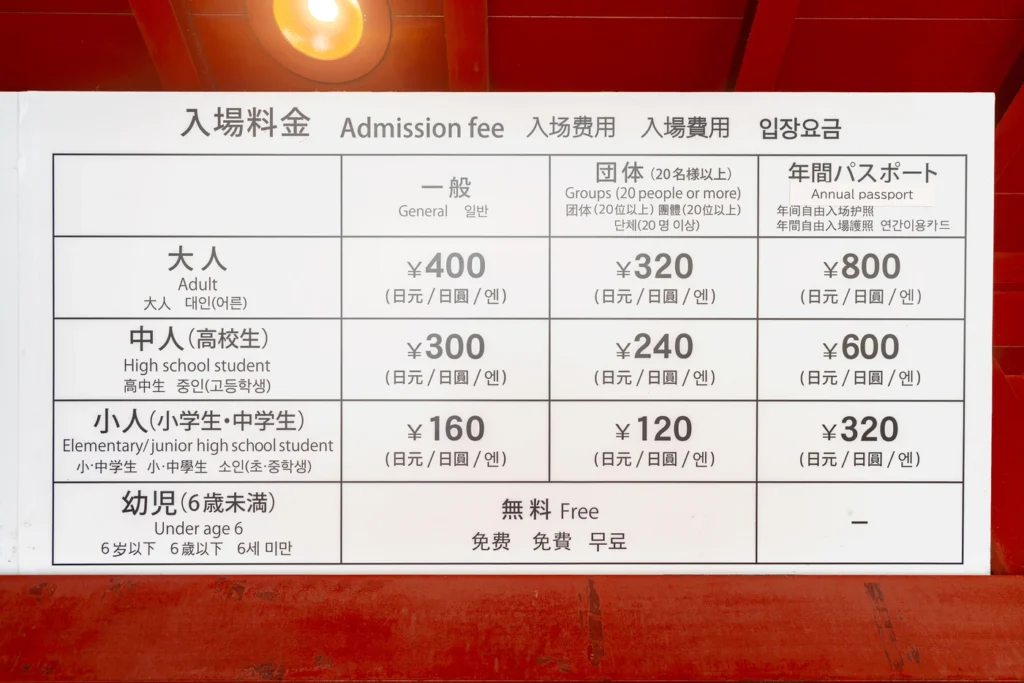
To enter Shuri Castle, you need to purchase a ticket. Currently, Shuri Castle is undergoing restoration work, so you can enter at a 50% discounted rate.
Adults 400 yen, high school students 300 yen, primary/middle school students 160 yen, and children under 6 are free.
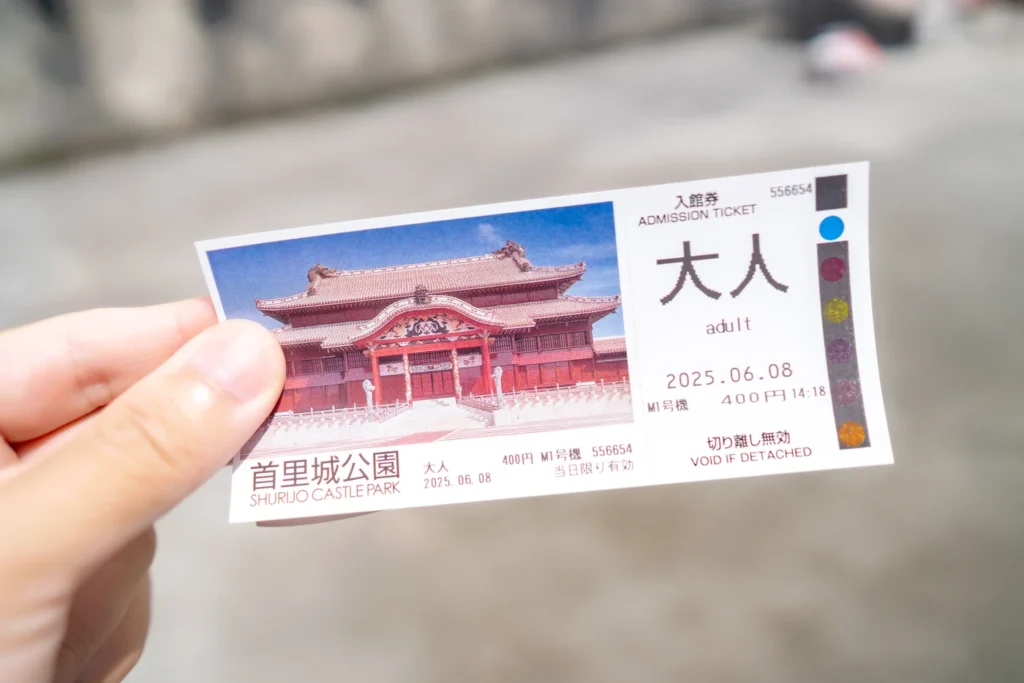
This is what the ticket looks like. After leaving the ticket office, submit it to the booth right next door and you can enter.
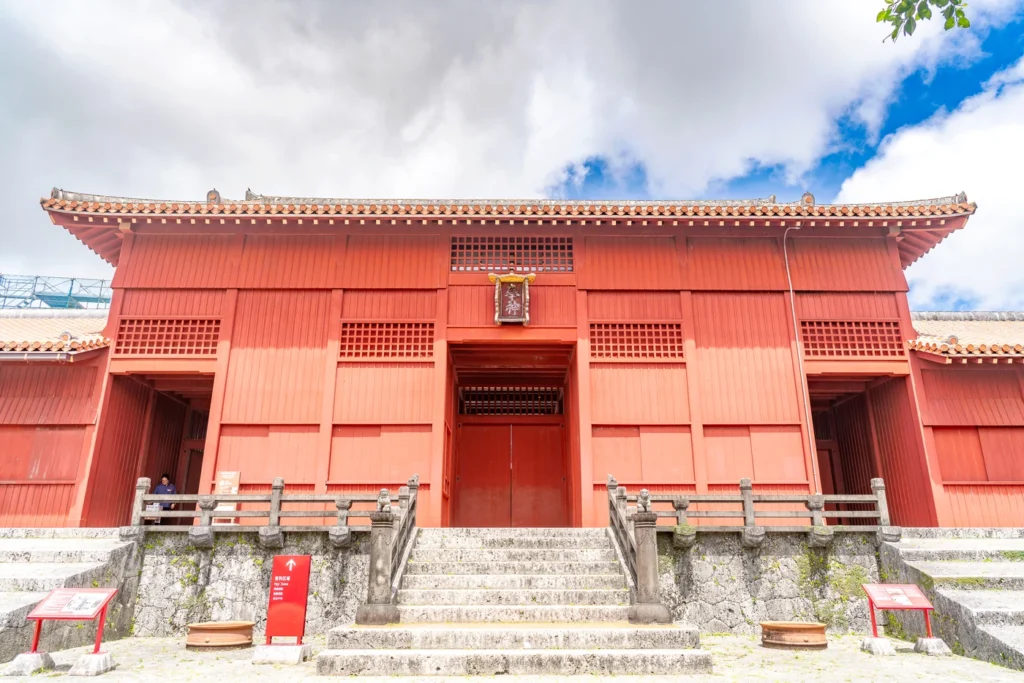
This is the Hoshinmon Gate. Can you see the small figure on the left? That’s where you enter. Although there are stairs in front, there’s a ramp on the left side, making it easy for prams or wheelchairs to access.
For your information, the Hoshinmon Gate is one of the most important gates protecting Shuri Castle. It is said that only royalty, ministers, and high-ranking officials could pass through this gate. The central gate was reserved for royalty, Chinese envoys, or top officials, while the left side was for ministers or high-ranking retainers, and the right side was for court ladies or lower-ranking officials.
By entering through the left gate, you become a minister or high-ranking retainer 👑
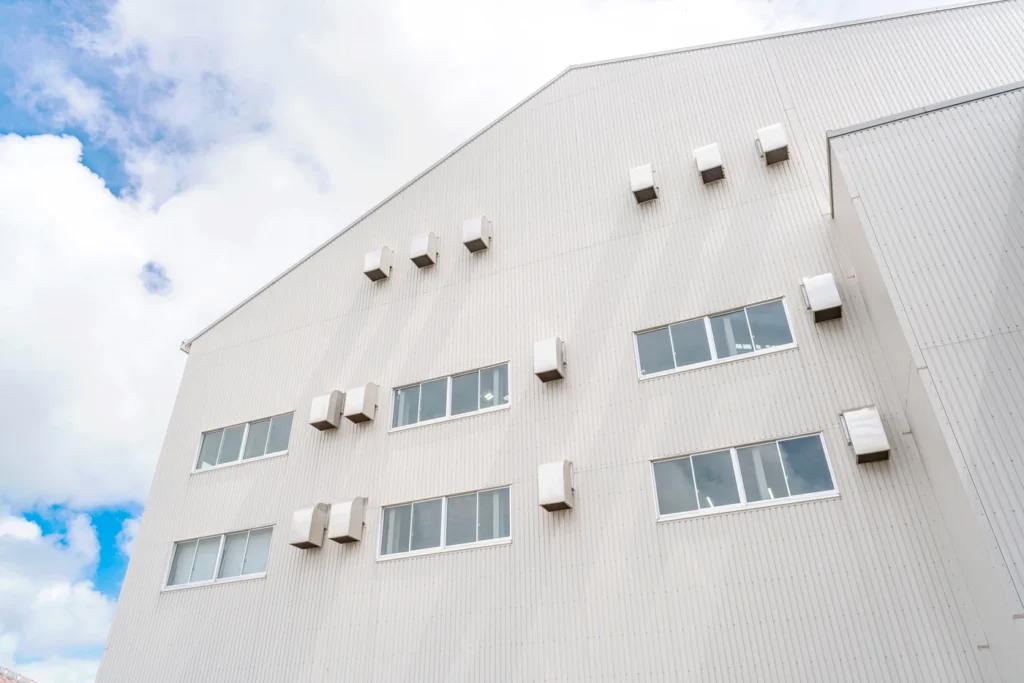

When you present your ticket at the entrance of Haisai News, the first thing you see is the exterior building of Shuri Castle, which is currently under restoration. This is a temporary structure that will be dismantled once the restoration work is complete. Inside the building, they are constructing the structure.

This is the scenery you can see as you follow the attraction route.
Since the Ryukyu Kingdom was heavily influenced by China, the Chinese architectural style is quite noticeable. From the high vantage point, you can gaze over Naha and even further out to the sea, making it a castle with a truly refreshing view.
🛠️ Restoration Site and Subsequent Viewing

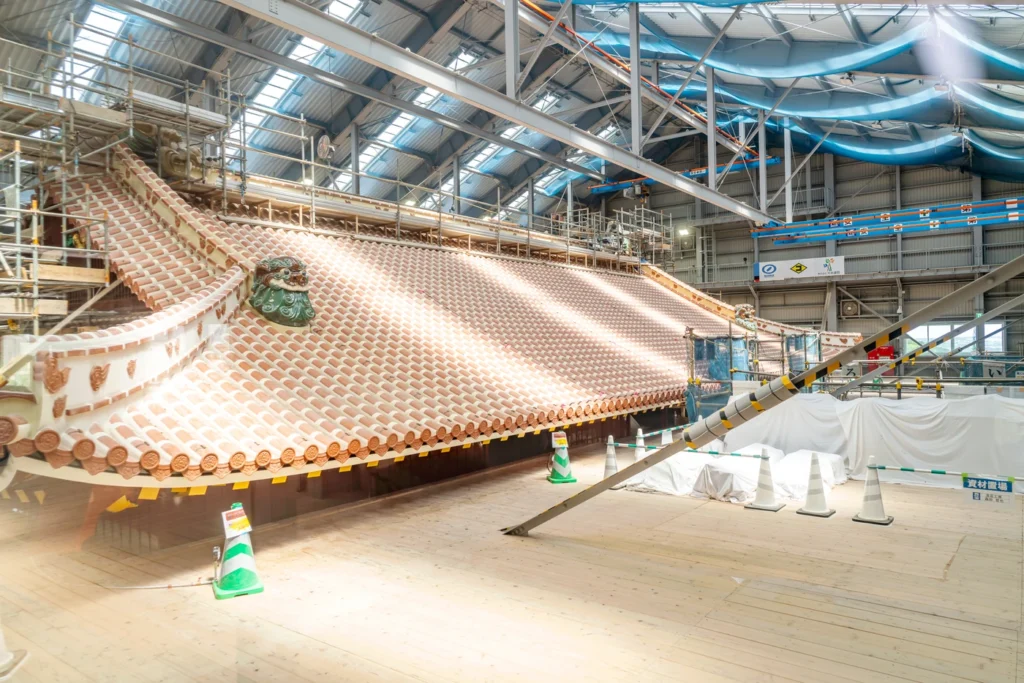
Once inside, you can directly see the current state of restoration for each area. On weekdays, you might see staff working on the restoration, but since I visited on a weekend, there were no workers present. It felt noticeably more advanced than when I visited in January. They plan to complete it by the end of next year, and I’m already looking forward to it.
For your convenience, there’s an elevator installed from the first to the third floor, so you can comfortably check the restoration progress on each level.
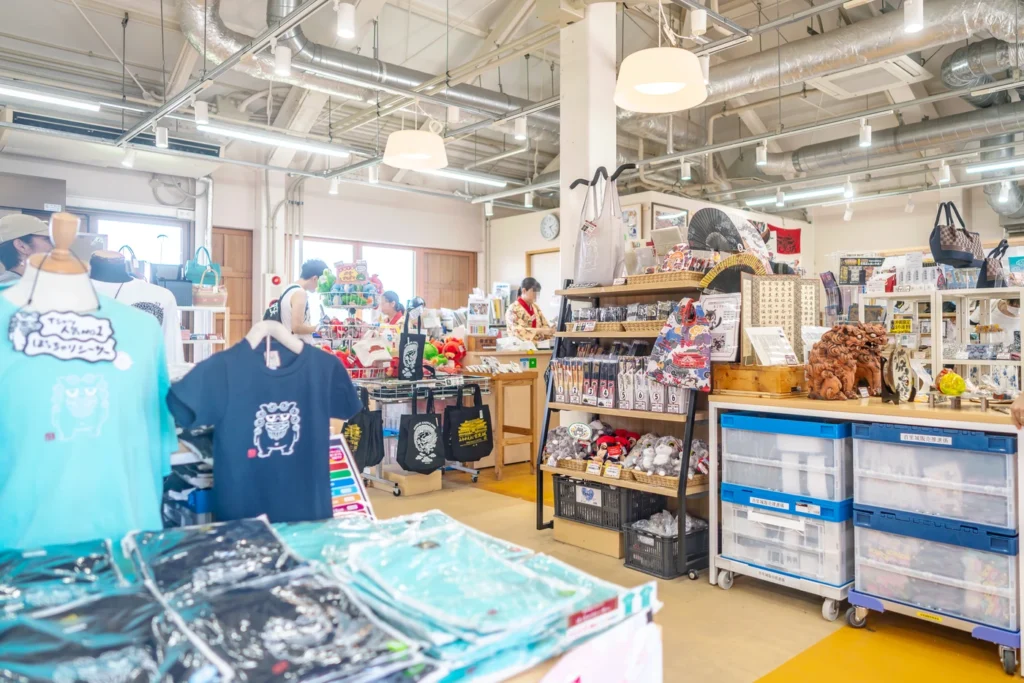
And do drop by the souvenir shop.
You’ll find some rather special souvenirs that you won’t see in downtown Naha. And remember when I mentioned the vending machine earlier? Well, the first one was here. If you’re feeling thirsty, grab a refreshing drink from the vending machine here before you go.
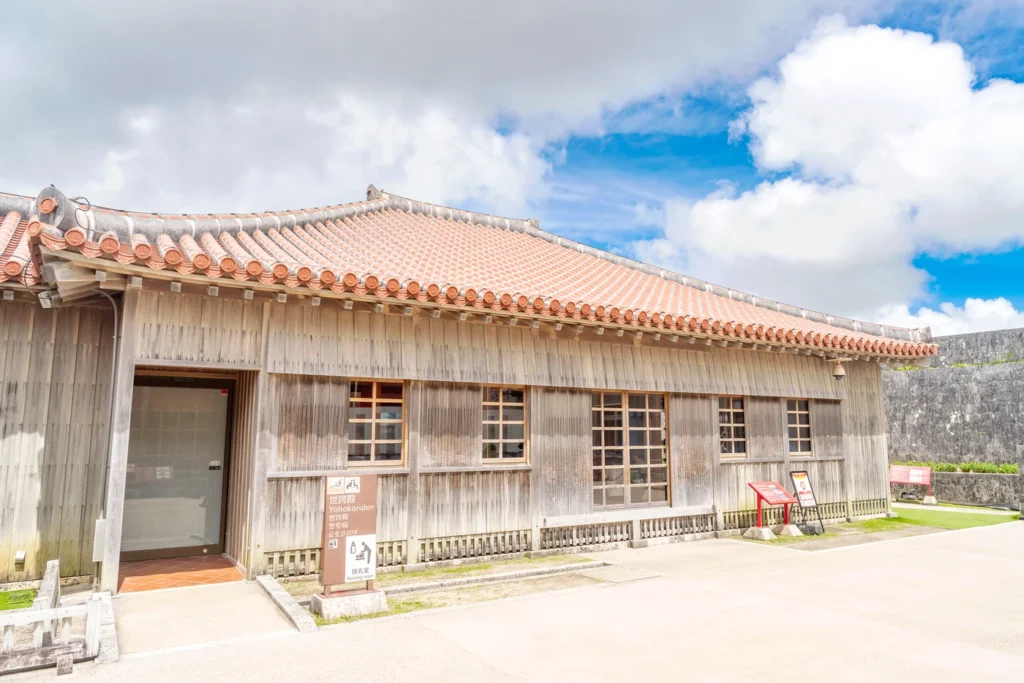
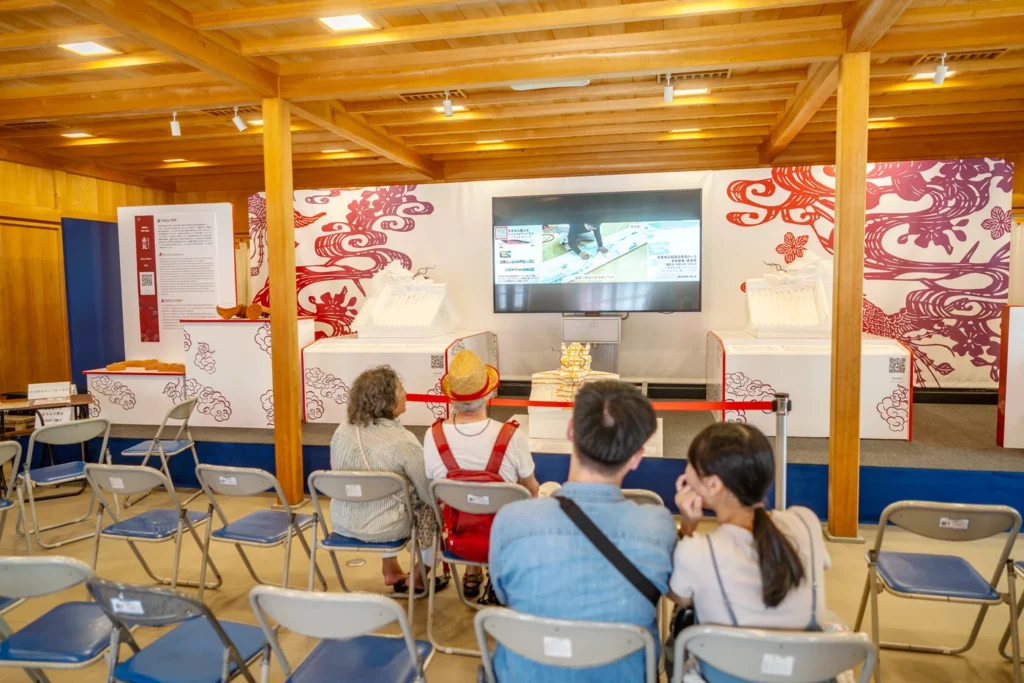
This is an important building called Yohokoriden.
It’s likely that it was quite hot on your way here. Inside, the air conditioning is wonderfully cool, so it’s a great place to take a break from the heat. Of course, there are vending machines inside. Let’s enjoy a refreshing drink and watch the restoration site documentary for a relaxing break 🥤
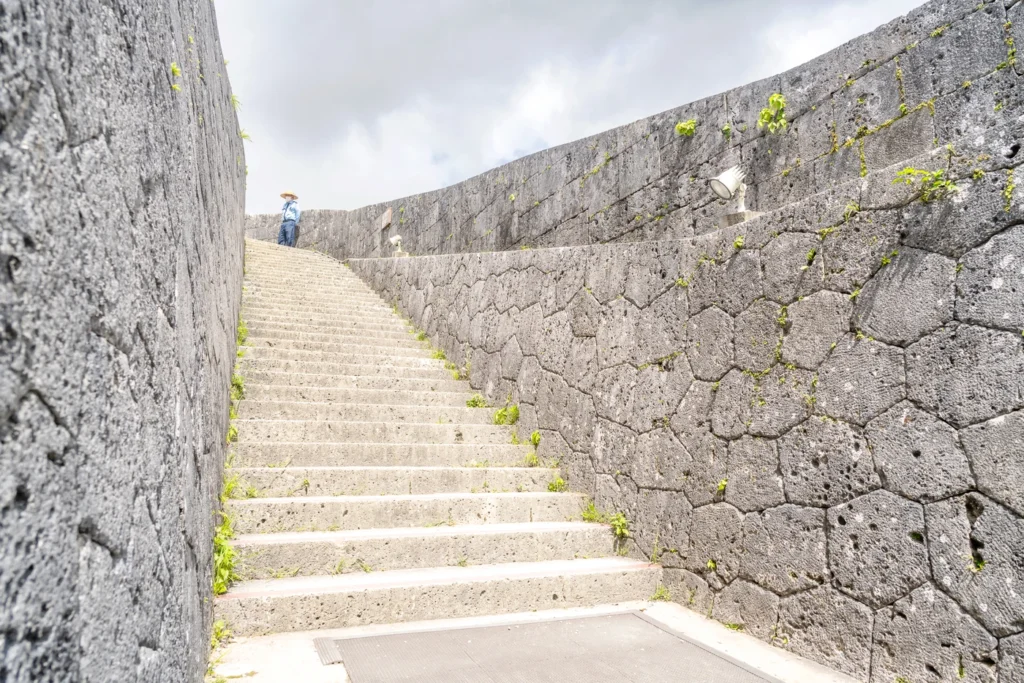
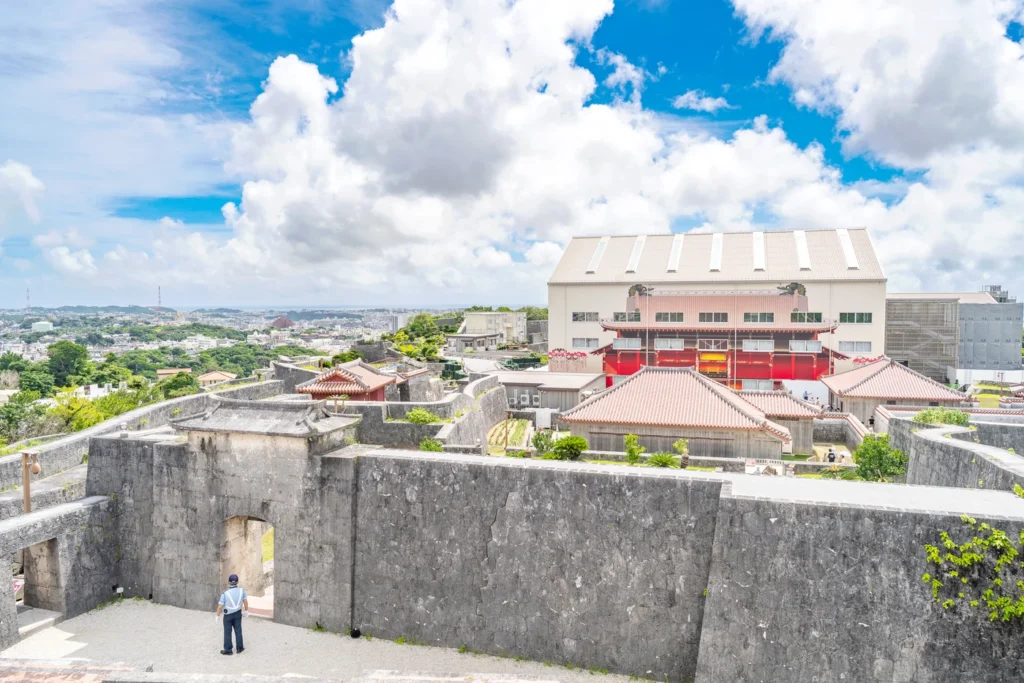
Agari no Azana is a staircase. Unfortunately, prams or wheelchairs cannot access this place. It’s composed purely of stairs. This is the most challenging spot we’re visiting today, but once you climb those stairs, you can enjoy a view of Naha from above.
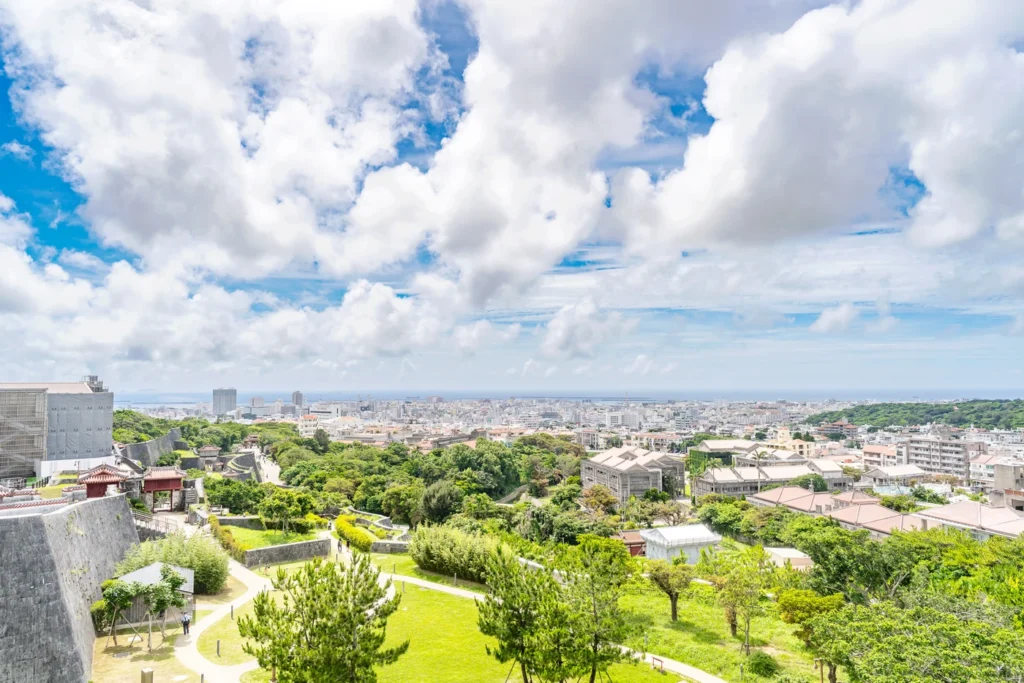
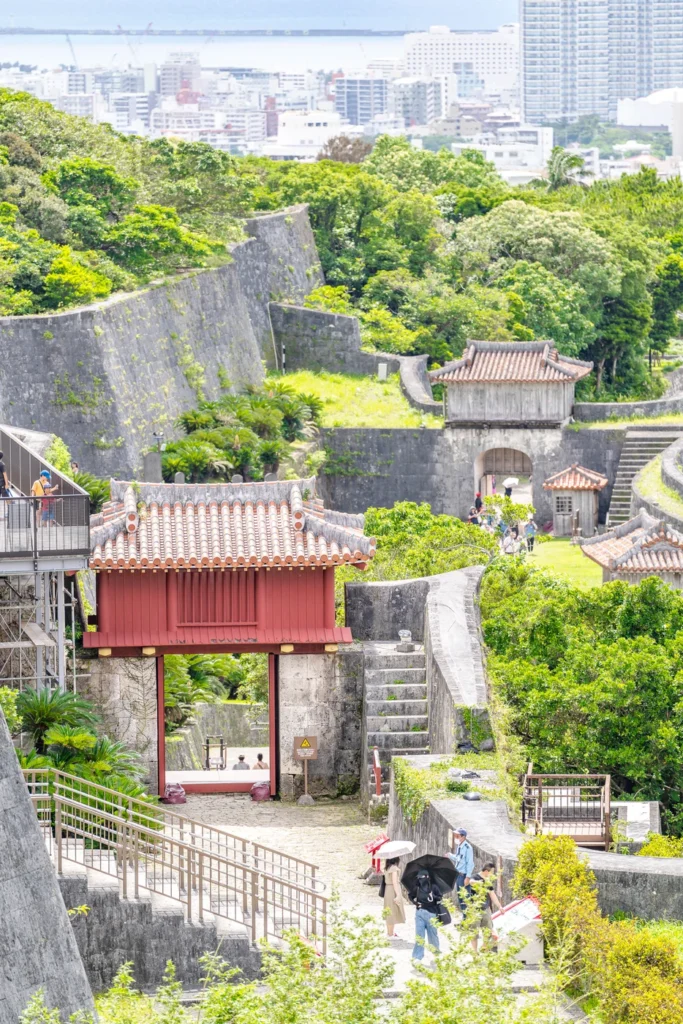
This is roughly what it looks like. Expansive Okinawa!
Let’s take a memorable photo here with the charming Naha city and the stunning sky as the backdrop 📷

We’re on our way back after finishing the tour. Even on the way back, we can see a few more historical sites.
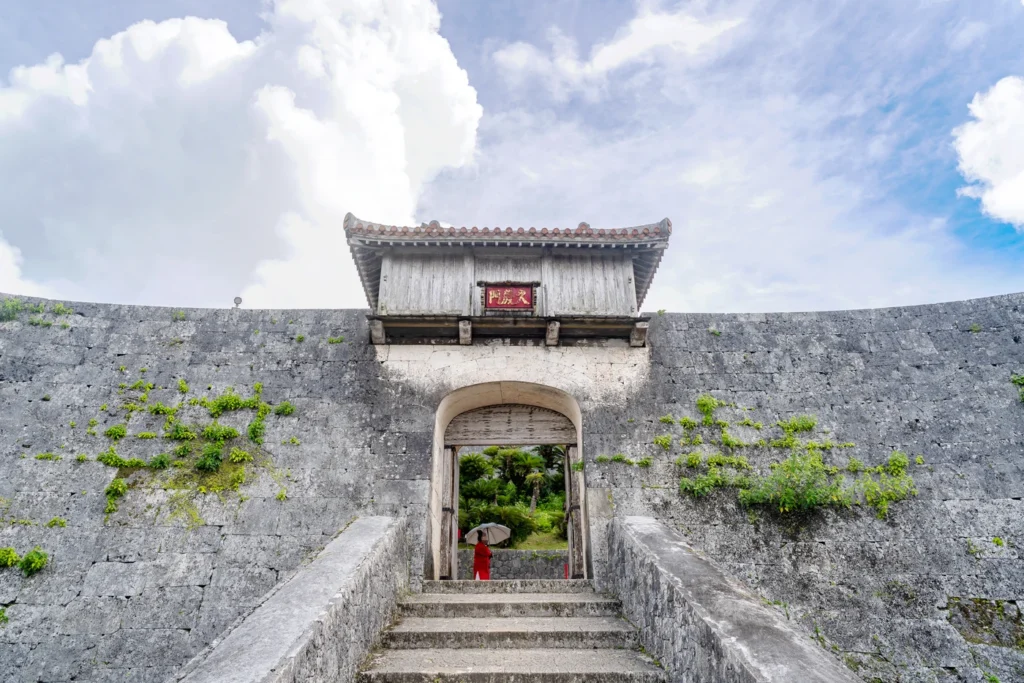
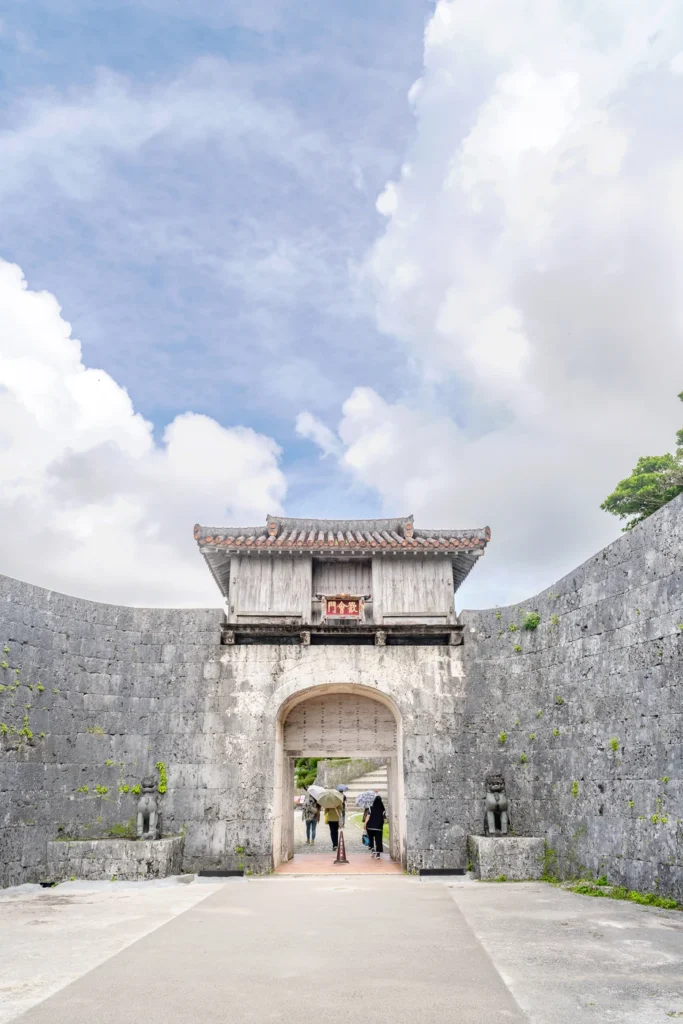
That’s the case with Gyukeimon or Gankai Gate.
I’ve never been to China, but I’ve explored a lot through the Three Kingdoms game. Seeing what I saw in the game in real life, the style felt truly unique and distinctive. In Korea, we tend to use very vibrant colours, don’t we? The Ryukyu Kingdom style seems quite simple.

The last stop is Shureimon.
In fact, this is the main gate, and it is said to mean a courteous, polite country. You can see a mini version of it when you arrive at Naha Airport and go up to the second floor, right? The real version of that is Shureimon here. It’s also the most important photo spot 👍
What do you think? If you visit Okinawa, why not consider adding Shuri Castle to your itinerary? It’s not a glamorous castle like those in Europe, but it has a dramatic history, and just coming to feel the resilient spirit that rises again even after being destroyed by bombs or completely burned down is reason enough 💪


